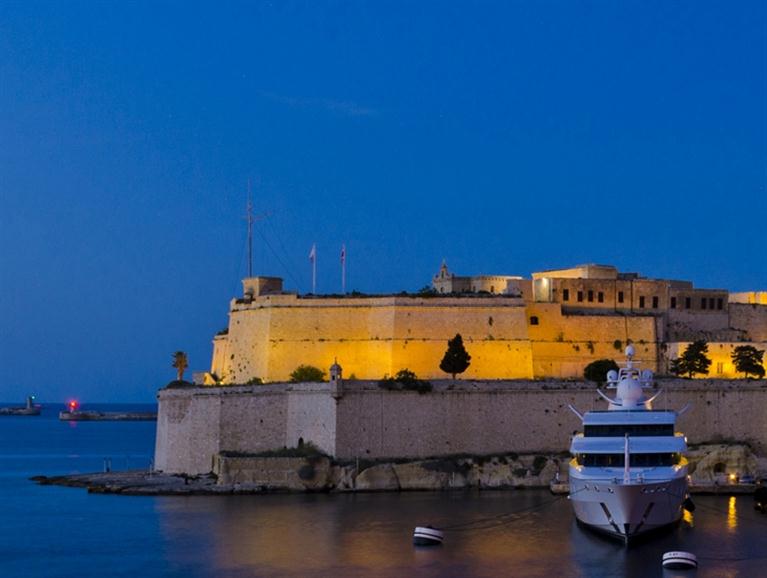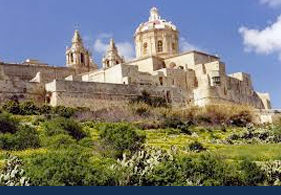
Malta
Political System and Geographical Location
Malta is one of the smallest democratic island states in the world, located in the basin of the Mediterranean, at the crossroads between Southern Europe and North Africa. Our nearest European counterpart is Italy to the North. The vicinity makes any Italian city just a short flight away. In the diametrically opposite direction is Tunisia, approximately 280 km away.
The Maltese archipelago is constituted of three islands. Malta is the mainland, its sister island Gozo, and the islet of Comino, which is located in the straight between the two communities. The latter is practically unhabituated, but its geological beauty; mostly its picturesque sand dunes and its crystal clear waters are sought by both locals and foreign visitors during the summer and also shoulder months.
First Settlers and Megalithic Temples
Malta maybe one of the smallest destinations in the world with just an area of 316 km2 (122 sq mi), but its history dates back to the earliest forms of civilisation. Historians indicate that most probably the first settlers in Malta date back to the year 5200 BC. Findings at Għar Dalam include pottery, dwarf hippos and dwarf elephants dating back to early Neolithic times. Most probably, these settlers and animals travelled south from the European continent towards the basin of the Mediterranean in search of a warmer climate in avoidance of the harsh and cold weather during the ice age period.
Furthermore, temples dating to the Neolithic era are living memories of our forefathers. Today, the several archaeological sites spread in various locations across Malta and Gozo are not only part of our patrimony and historical heritage but also of worldwide importance as they are acclaimed for their UNESCO status for being the first free standing structures built by mankind.
Conquerors of the Maltese Islands
Throughout the years, until Independence in 1964, many military rulers occupied Malta. Amongst the many colonizers we can count the Phoenicians, Romans, Spaniards, Arabs, the Knights of the Order of Jerusalem, French, and the last occupier the British Monarch. All of them set foot on the Maltese islands with the intention of exploiting its strategic location.
Malta offered both military advantages and trade opportunities. Malta was of militarily importance to its occupiers mainly due to its natural harbour which offered shelter to its military garrison. During the period of the Order of St. John intensive military construction and engineering took place to fortify the harbour perimeter. Mount Sciberras was to become the new capital, nowadays known as Valletta and subsequently fortification plans were drawn for its neighbouring cities mainly Birġu, Bormla and Isla.
Apart from its strategic military importance, Malta was also an important trading hub sought by seafarers. Before mankind took to the skies the sea was the only alternative to land for exchange of goods. Malta’s occupiers did not take long to understand the economic validity from expoiting Malta’s geographical harbour. In fact, over the years several storage wharves and shipping docks were constructed in the area.
A point of interest is that documentation exists that the Maltese during teh times of the Knights and the Victorian era were able corsairs that plundered ships flying the enemy ensign. Licenses from corsair activity and taxation from their plunders were considered as windfall revenue to the establsihment.
World Wars
During both World Wars, Malta served on the right side of history and fought tooth and nail alongside the British forces and its allies to defeat the enemy forces and restore peace and world order.
Independence to Modern Times
Today Malta is an independent island state and a member of the European Union since 1st May, 2004. From a fortress colony Malta has grown into a diversified economy offering great opportunities in all productive sectors such as but not limited to banking, accounting, auditing and assurance, insurance, tourism and hospitality, maritime, aviation, manufacturing, pharmaceutical, gaming, telecoms, yachting, filming, property and renting markets, in addition to several small to medium family run enterprises operating in both the local and export context.
From a bicycle economy Malta’s development was progressive defying the predictions of many political and economic pundits during post-independence times. Many considered the islands economic progress is nothing short of a miracle, especially when one takes note of the many failed economic and political policies of many small states in the Carabean and Pacific region. Malta’s economic success is due to good governance, observance of the rule of law, enterpreneuship acumen, good healthcare facilities, an attractive taxation framework, and an educated workforce.
In general, earnings of a Maltese household are within the EU average, health care is primarily free at all levels as it is a state service albeit private healthcare services are also offered. Similarly, the education system is split between the state and private institutions. Education is obligatory until the age of sixteen however many youth continue their studies at the University of Malta or other reputable internationally recognized educational institutions.Malta lacks primary resources and therefore its economic success is totally dependent on the value added of its workforce.
The Maltese way of life is also conducive to a healthy lifestyle. The Maltese love the outdoors. The favourable weather, which practically lasts all year make it possible to enjoy both day and night.
Eateries are established in every corner of the island, whether along the coastal stretches or inland village core. The Maltese kitchen is renowned for its Mediterranean cuisine which is based on locally caught fresh fish and other local produce, such as tomatoes, honey, olives and other seasonal vegetables. Local wines help to compliment the palate of traditional Maltese dishes.
Nowadays, exercising is a way of life. Sport enthusiasts can make use of the many facilities on the island being private gyms or the many sport set-ups within the hotel network on the island.
Open water sport is also very popular. The islands are very popular for various diving sites featuring spectacular wrecks. Adventure sports such as rambling, rock climbing and zip lining are also gaining in popularity.
Other more popular forms of relaxation such as a visit to the cinema, a drink at the local pub or a coffee at a shopping mall are all within reaching vicinity from any location in Malta or Gozo.
Those whom like a taste of culture have a field day. The capital Valletta is a monument in itself featuring cathedrals, several auberges, military forts, war museums and art galleries.
It also offers spectacular views of the Grand harbour from its hanging gardens. Furthermore, it’s impressive bastion perimeter, that runs for several kilometres from Valletta all the way to the three cities, on the opposite side of the harbour, make it a truly a European city that lives to its name, “A city for gentlemen from gentlemen.” Valletta is nominated to be the European city of Culture for 2018. Other pockets of culture exist all over the islands of Malta and Gozo but volumes are required to cover all grounds. Finally, these islands are sought by many due to our warm welcome and hospitality.
















